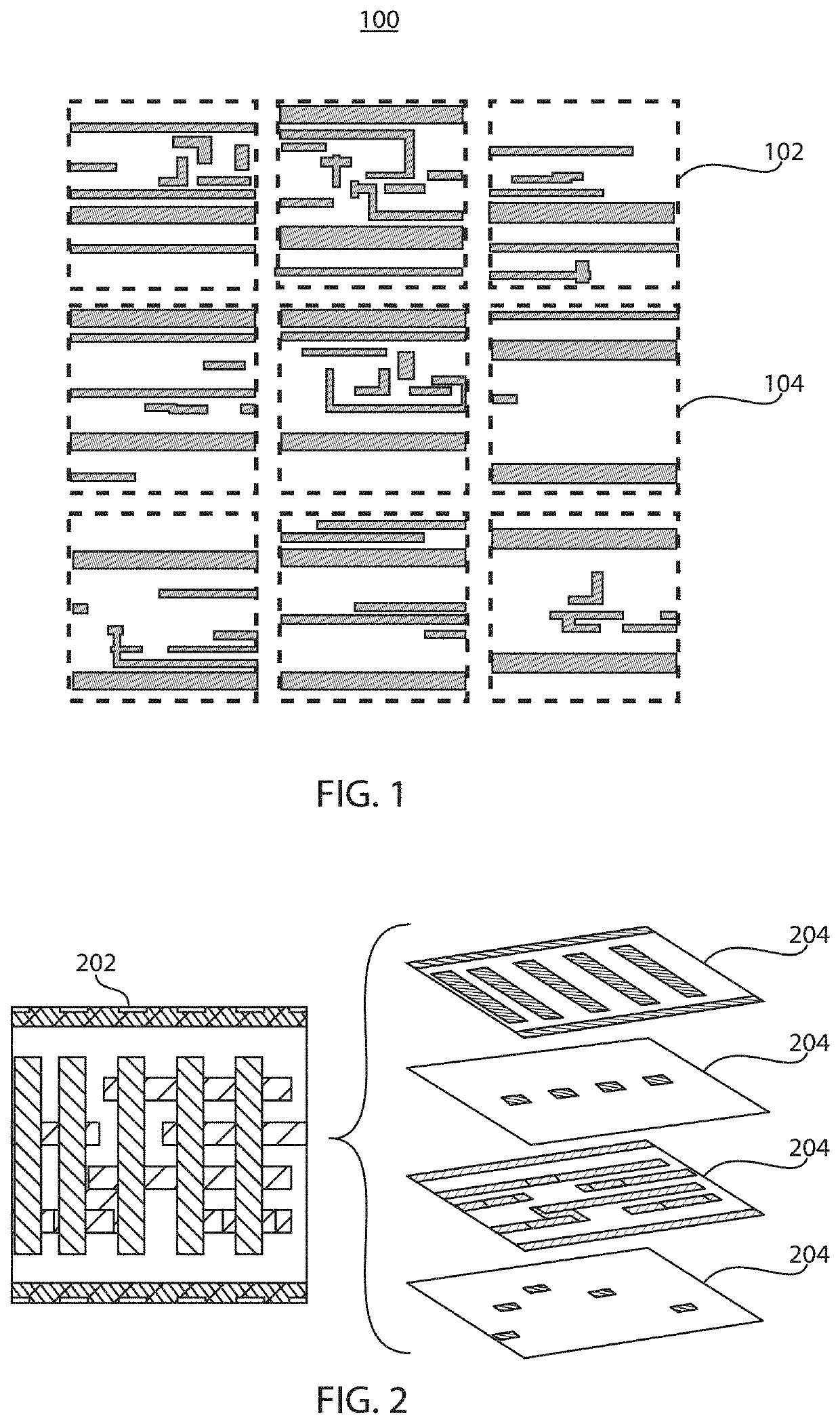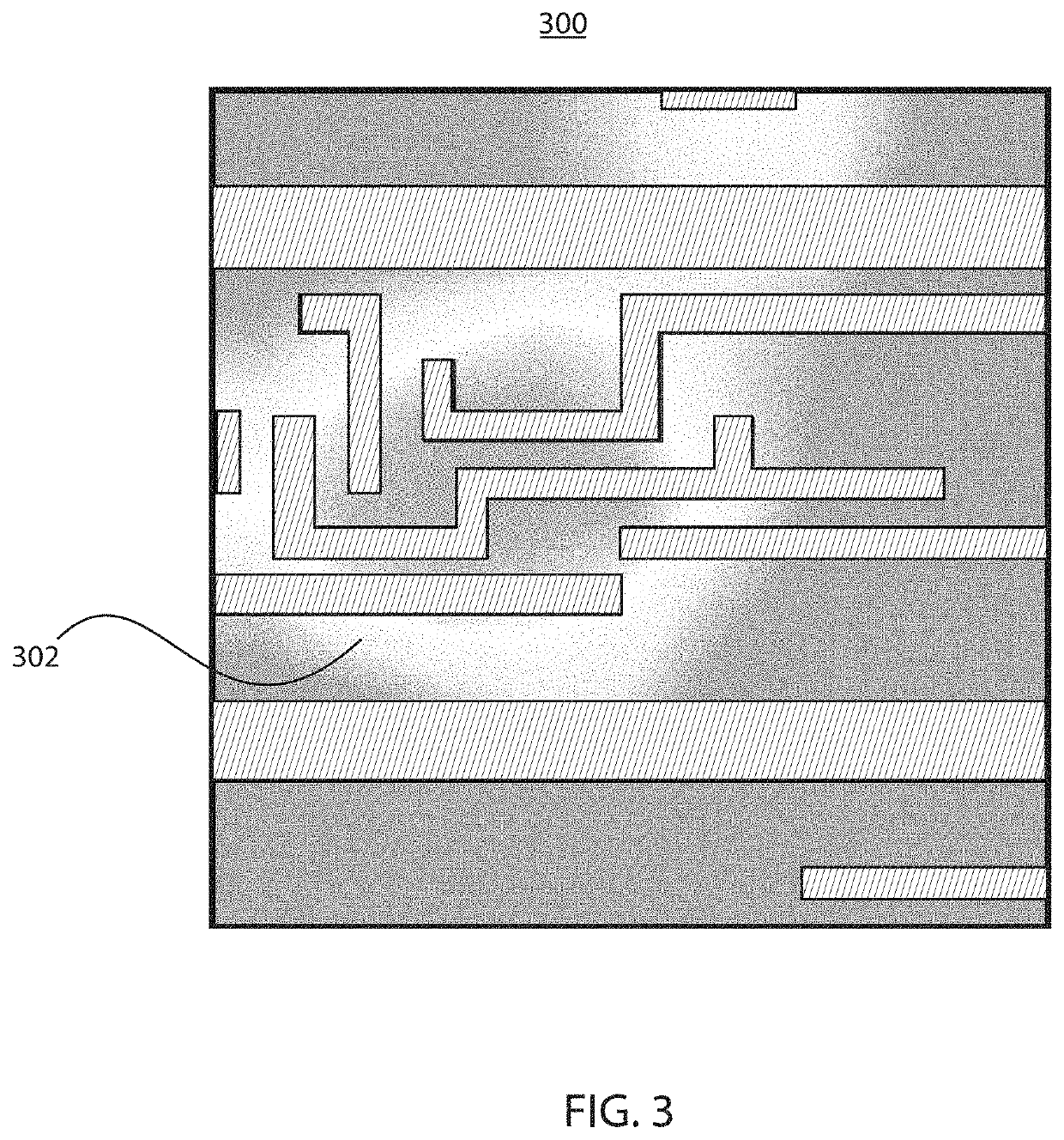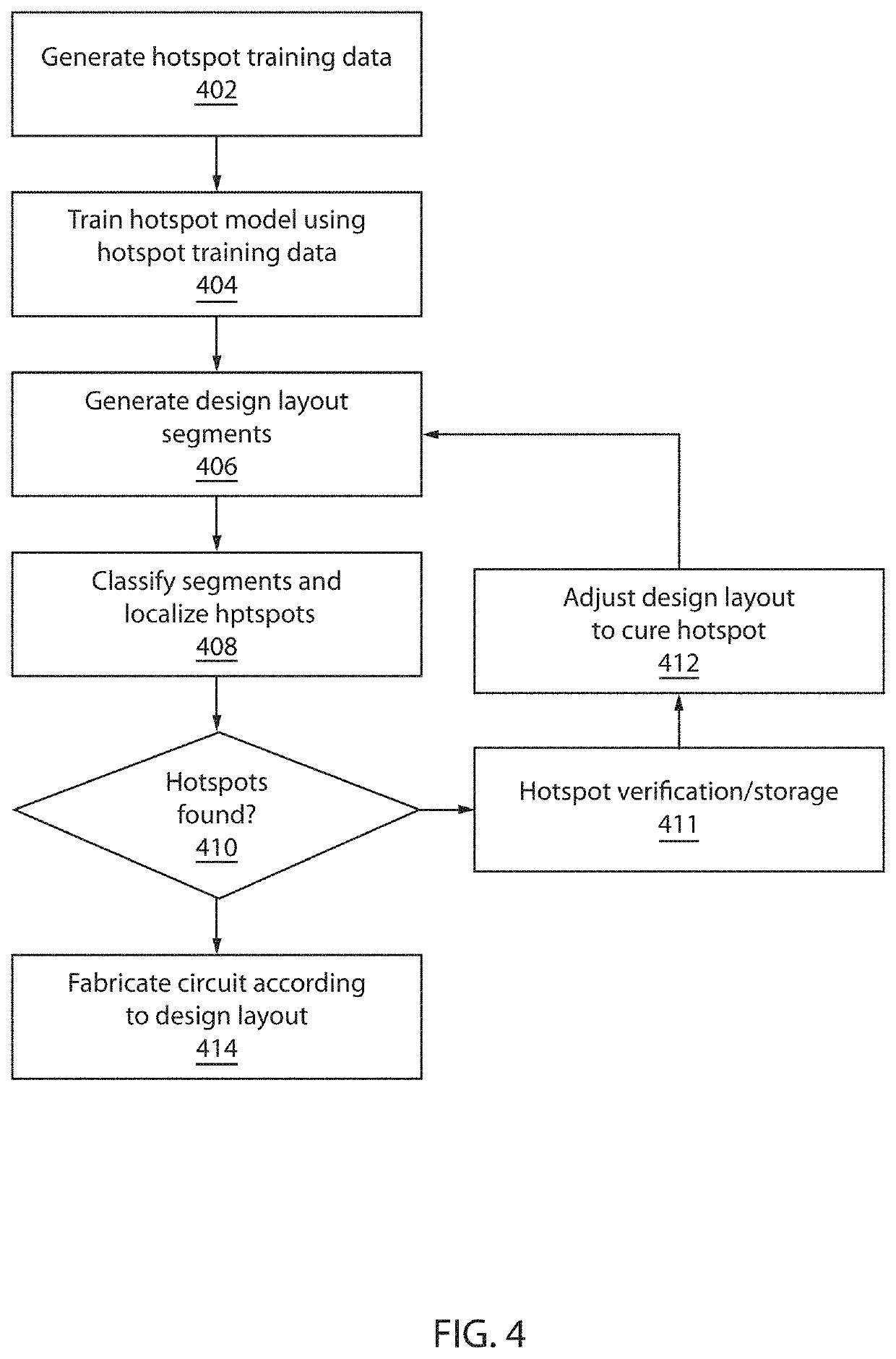Classification and localization of hotspots in integrated physical design layouts
a physical design and layout technology, applied in the field of integrated circuit design, can solve the problems of failure of fabricated devices, circuit design may not be manufacturable or inoperable in its first iteration, and become more difficult to ensure that the circuit design meets all practical manufacturability requirements, and achieves the effect of increasing the likelihood of a hotspo
- Summary
- Abstract
- Description
- Claims
- Application Information
AI Technical Summary
Benefits of technology
Problems solved by technology
Method used
Image
Examples
Embodiment Construction
[0020]Embodiments of the present invention employ machine learning in the form of, e.g., deep neural networks, to automatically classify and localize hotspots in design layouts without simulation. A model is built based on training data of layout patterns and their labels to automatically extract features of hotspots from layouts and to localize which part of a given layout leads the model to its classification decision. The present embodiments thereby automatically and rapidly perform simultaneous classification and localization, detecting hotspots at any process step (e.g., including lithography and etch hotspots).
[0021]Toward that end, the present embodiments make use of training data that associates patterns of exemplary physical design layouts with a pre-determined classification of whether each pattern includes one or more hotspots. A deep convolutional neural network (CNN) may be used to build the model, though it should be understood that other forms of machine learning may ...
PUM
| Property | Measurement | Unit |
|---|---|---|
| heat | aaaaa | aaaaa |
| area | aaaaa | aaaaa |
| conductive | aaaaa | aaaaa |
Abstract
Description
Claims
Application Information
 Login to View More
Login to View More - R&D
- Intellectual Property
- Life Sciences
- Materials
- Tech Scout
- Unparalleled Data Quality
- Higher Quality Content
- 60% Fewer Hallucinations
Browse by: Latest US Patents, China's latest patents, Technical Efficacy Thesaurus, Application Domain, Technology Topic, Popular Technical Reports.
© 2025 PatSnap. All rights reserved.Legal|Privacy policy|Modern Slavery Act Transparency Statement|Sitemap|About US| Contact US: help@patsnap.com



